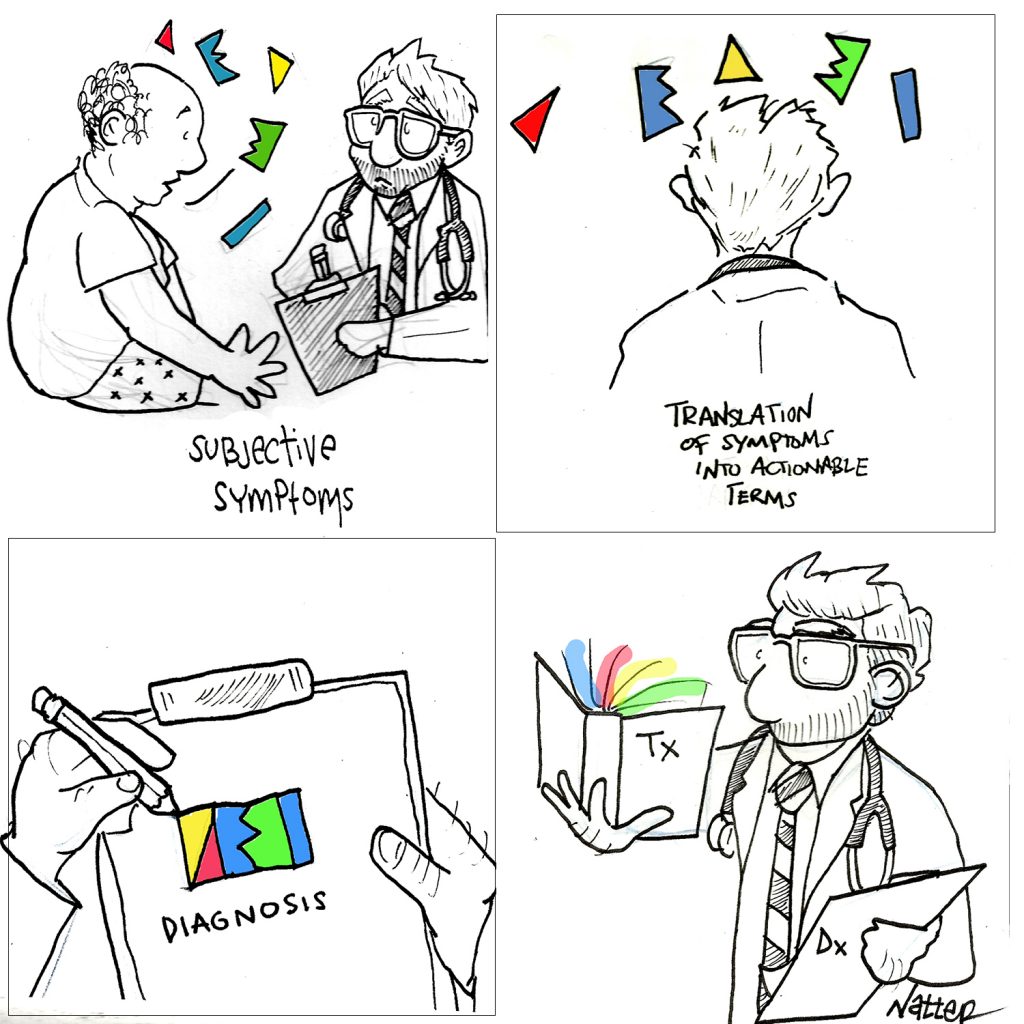by Michael Natter, 2017 Rudin Fellow
I like to simplify things down to their basic components. That’s how I fully understand the way things work. Medicine is inherently complicated, full of complex mechanisms of action, pathophysiology, diagnosis, and treatment. It can be overwhelming. At its core, however, the practice of medicine can be distilled into a few key steps. An Integral to this process is language, or jargon. The initial step is translation from the patient’s laymen terms into medical jargon. This triggers an illness script which organizes a clinician’s thoughts and allows a beautiful thing to happen: the creation of a differential diagnosis list, with the most likely diagnosis at the top down to the least likely at the bottom. The most seasoned doctors are revered for their skill at generating a long laundry list of possible diseases from their newly translated illness script. They say that 90% of diagnosis is hidden in the history taken from the patient. Clicking those pieces together to form a whole is a marvelous feeling, like completing a challenging NY Times crossword puzzle late in the week. Yet, the job is note quite finished. Assigning a diagnosis to a patient now allows us to properly treat. Today, the wealth of clinical resources at our fingertips is staggering. With the ever-changing landscape of new pharmacology and evolving treatments, it is tough to keep current with what is the best, most up to date treatment for our patients. Now, with the advent of apps and handy tools, once the diagnosis is defined, we can tailor the treatment not only to the specific diagnosis, but also to the individual patient who has the disease. These are the mental steps I use to boil down the complexity of medicine.








